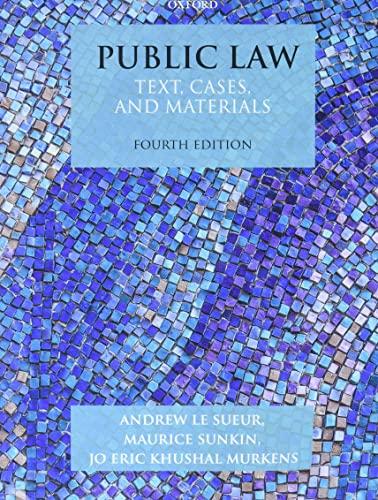Question
Part I Number your paper from 1-24 and list the correct letter choice/term for each statement. A. Autonomy B. Beneficence C. Benevolent deception D. Compensatory
Part I
Number your paper from 1-24 and list the correct letter choice/term for each statement.
A.Autonomy
B. Beneficence
C. Benevolent deception
D.Compensatory justice
E. Contractarian theory
F. Correlative obligation
G. Distributive justice
H. Fiduciary relationship
I. Imperfect obligation
J.Implied consent
K.Informed consent
L.Justice
M.Legal right
N. Natural right
O. Nonmaleficience
P.Original position
Q. Paternalism
R.Perfect obligation
S.Principle of double effect
T.Procedural justice
U.Recipient rights
V.Role fidelity
W.Therapeutic privilege
X. Veracity
1. The concept that requires fairness in the processes that resolve disputes and allocate resources.
2. A theory of morality that grounds all claims to rights in the principle of justice founded on collective choice.
3. A power, privilege, or immunity guaranteed under a constitution, statute, or decisional law.
4. The faithful practice of the duties contained in the particular practice or specialty.
5.When one person has a right, others have obligations to either refrain from hindrance or provide the required goods and services associated with the right.
6. The belief that one should, on the basis of doing good for the patient, limit the patient's personal autonomy.
7. Personal self-determination; the right of patients to participate in and decide questions involving their care.
8. An imagined state in which individuals make choices under a veil of ignorance.
9. A claim that does not create obligation.
10. Truth telling.
11. Occurs when the patient adopts particular behaviors, consistent with understanding and complying with the requests of a health care provider.
12. A right that grows out of the nature of man and is necessary to fulfill the ends to which nature calls him.
13. The right of the health care practitioner to provide care for patients without informed consent, such as for emergency care or incompetent patients.
14. Refers to the extent to which people are fairly compensated for their injuries by those who have injured them.
15. The basic principle that deals with fairness and entitlements in the distribution of goods and services.
16. A claim that justifies and creates correlative obligations.
17. Rights that provide an interest or title in an object or property; just and legal claim.
18. The principle that imposes on the practitioner a duty to seek the good for patients under all circumstances.
19. Occurs when patients understand the nature of the condition, the treatment options, and the risks involved.
20. The principle that imposes the duty to avoid or refrain from harming the patient.
21. Refers to fair distribution in society, structured by various moral, legal, and cultural rules and principles.
22. A doctrine used to determine whether an action is morally defensible when it has more than one consequence, usually both favorable and unfavorable.
23. The view that one can lie to a patient for his own good.
24. A special relationship of loyalty and responsibility formed between the patient and practitioner.
Part II
- It is clear that not all wants can or should be converted into rights, yet it seems as if we are being inundated by demands from various groups expressing their views as rights.
Select one of the topics listed below. Devise an argument using one or more ethical principles to justify why you feel that group's claims either should or shouldn't be considered rights. Again, this should not be based solely on personal opinion or preferenceyou must substantiate your claim using one or more ethical principles to receive credit.
- nonsmokers' rights
- smokers' rights
- marijuana smokers' rights
- gay rights
- animal rights
Step by Step Solution
There are 3 Steps involved in it
Step: 1

Get Instant Access to Expert-Tailored Solutions
See step-by-step solutions with expert insights and AI powered tools for academic success
Step: 2

Step: 3

Ace Your Homework with AI
Get the answers you need in no time with our AI-driven, step-by-step assistance
Get Started


